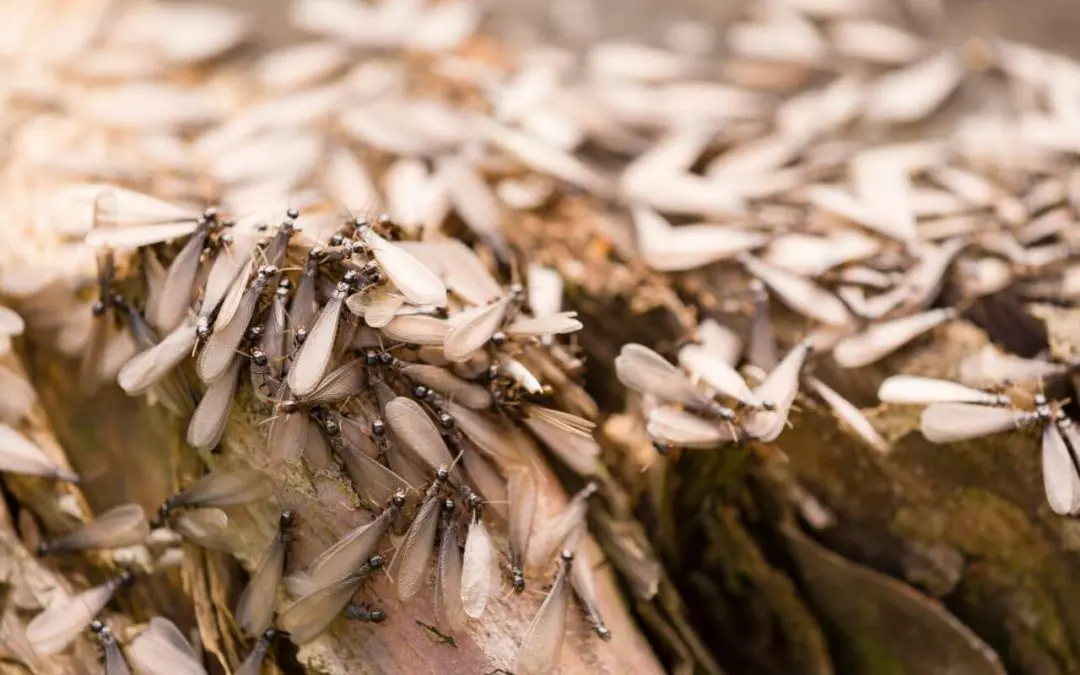Termites are one of the most dangerous pests for homeowners, and they can do permanent damage in a short amount of time. As termites eat their way through any wooden structure, they cause structural issues requiring extensive repair. It’s essential to know the signs of termites in the home so you can act quickly if you spot them.
1. Termites in the Home: Small Flying Ants
Until termites find a mate, they have tiny wings and look like small flying ants. These termites are called swarmers, and they are attracted to porch lights and other lights at night, much like moths.
Ants have a tapered waist and curved antennae. Swarmers have two straight antennae, a tan color, and a thick body without a narrow waist. If you see swarmers at night or during the day, you might have termites in the home.
2. Hollow or Blistered Wood
Termites move through the middle of the wood, which means that termites in the home will eat from the interior to the exterior. Instead of seeing damage to the surface of boards in your basement, you are more likely to hear a hollow sound when you knock on wood.
Another sign of termite activity is blistering or warping. If you notice that your doors and windows are not opening or closing correctly, you should schedule an inspection for further investigation.
3. Termites in the Home: Discarded Wings in Piles
Swarmers shed their wings after they mature and find a mate. If you spot a pile of discarded translucent wings in your basement, near a window, or around the house’s foundation, there’s a good chance that you have termites in the home.
These wings are tiny and hard to see unless they are in a central location that you’ll notice when you clean the house, so it takes a keen eye to spot them.
4. Piles of Sawdust
When termites leave behind droppings, the piles look similar to sawdust. This wood shaving-like material is called frass. Frass is a significant sign of termites in the home. Only drywood termites will leave behind frass, as other termites use their droppings to build the tunnels or mud tubes that allow them to travel into and around your home.
5. Termites in the Home: Mud Tubes on the Walls
Unlike drywood termites that push out frass onto the floor, subterranean termites use their droppings to make tunnels. These tunnels look like tubes the color of mud and are constructed on walls or the foundation of the home. They do not always follow a logical pattern and might look like streaks of dirt from a distance.
If you notice any of these signs on the floors, walls, or roof, contact a professional immediately to determine if you have a termite problem in your house.
Wild Rose Property Inspection offers inspections to homebuyers and sellers in the Alberta area. Contact us to request our service.

